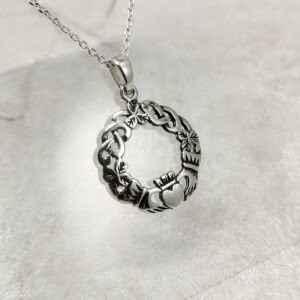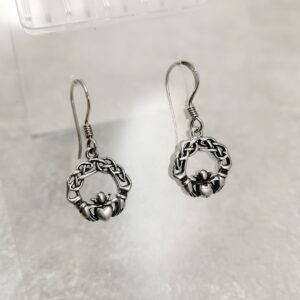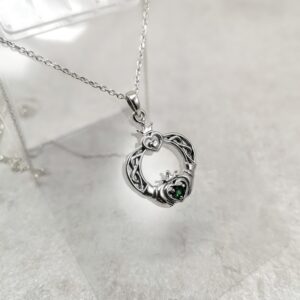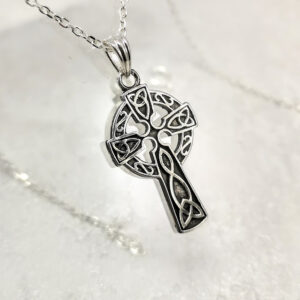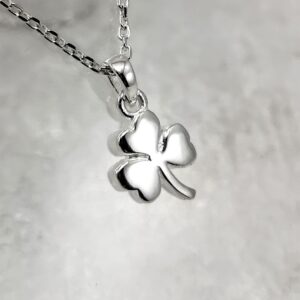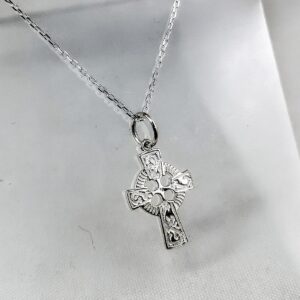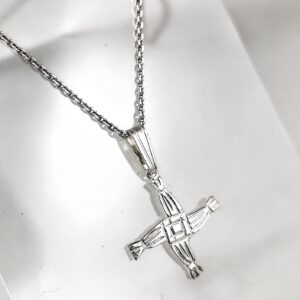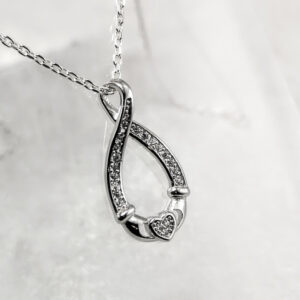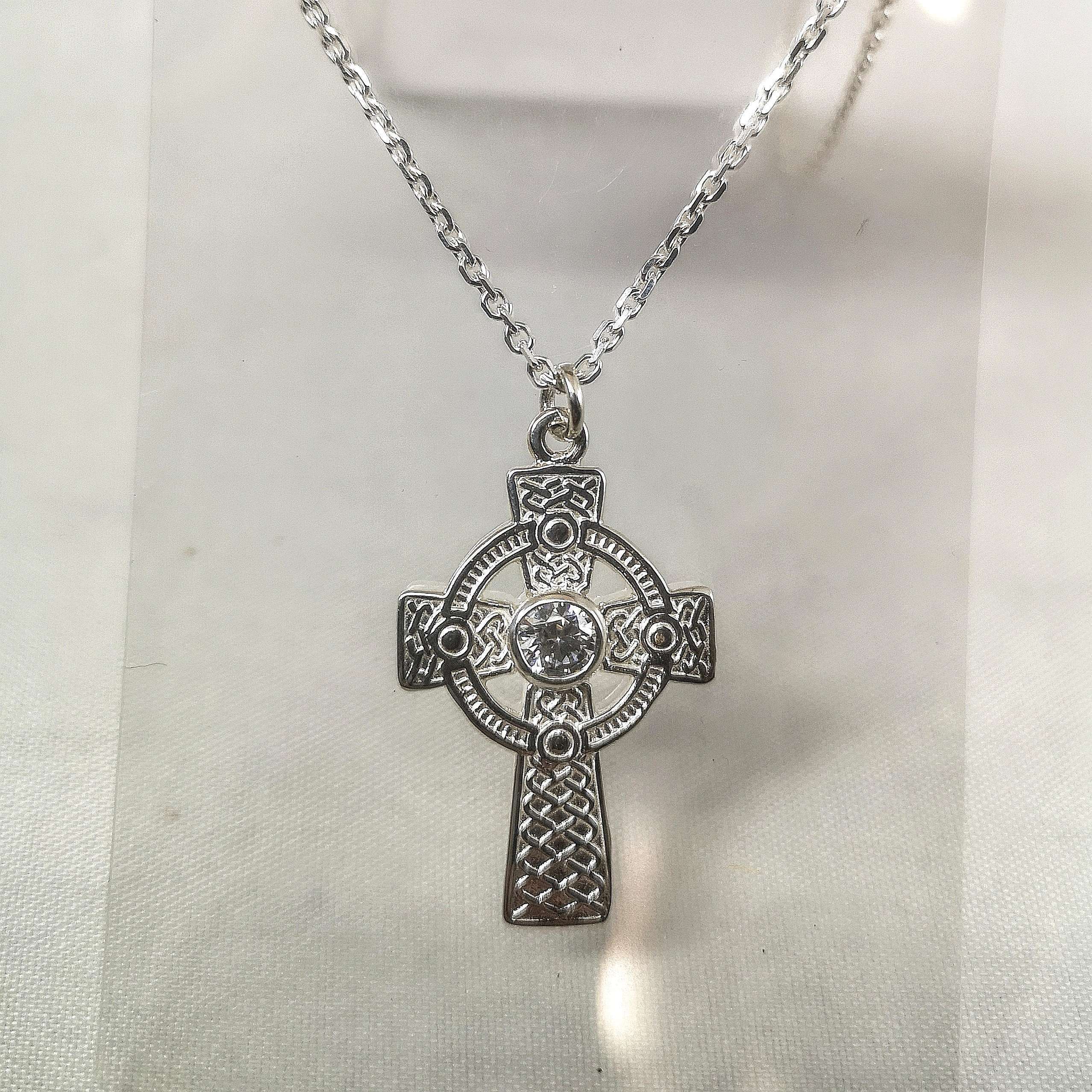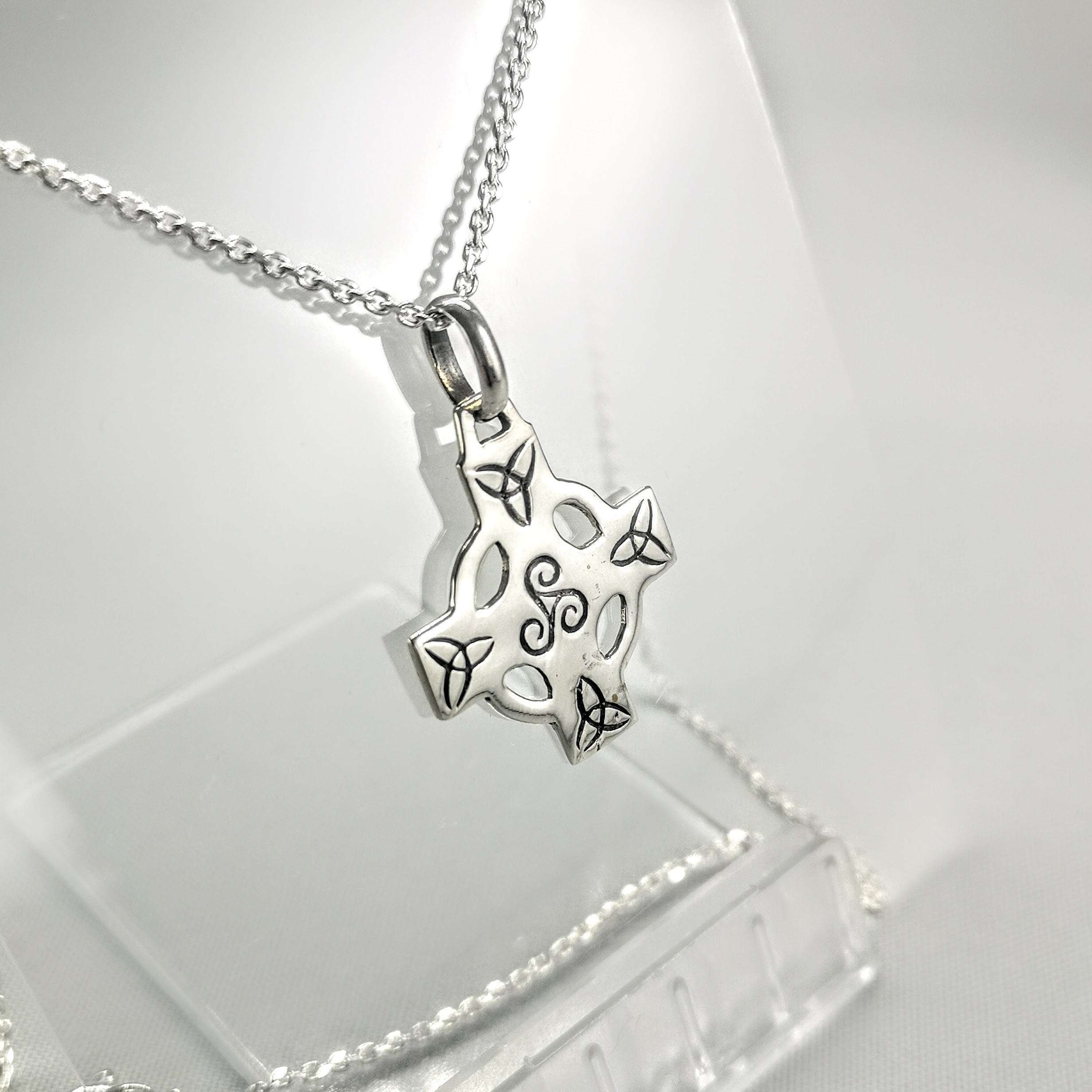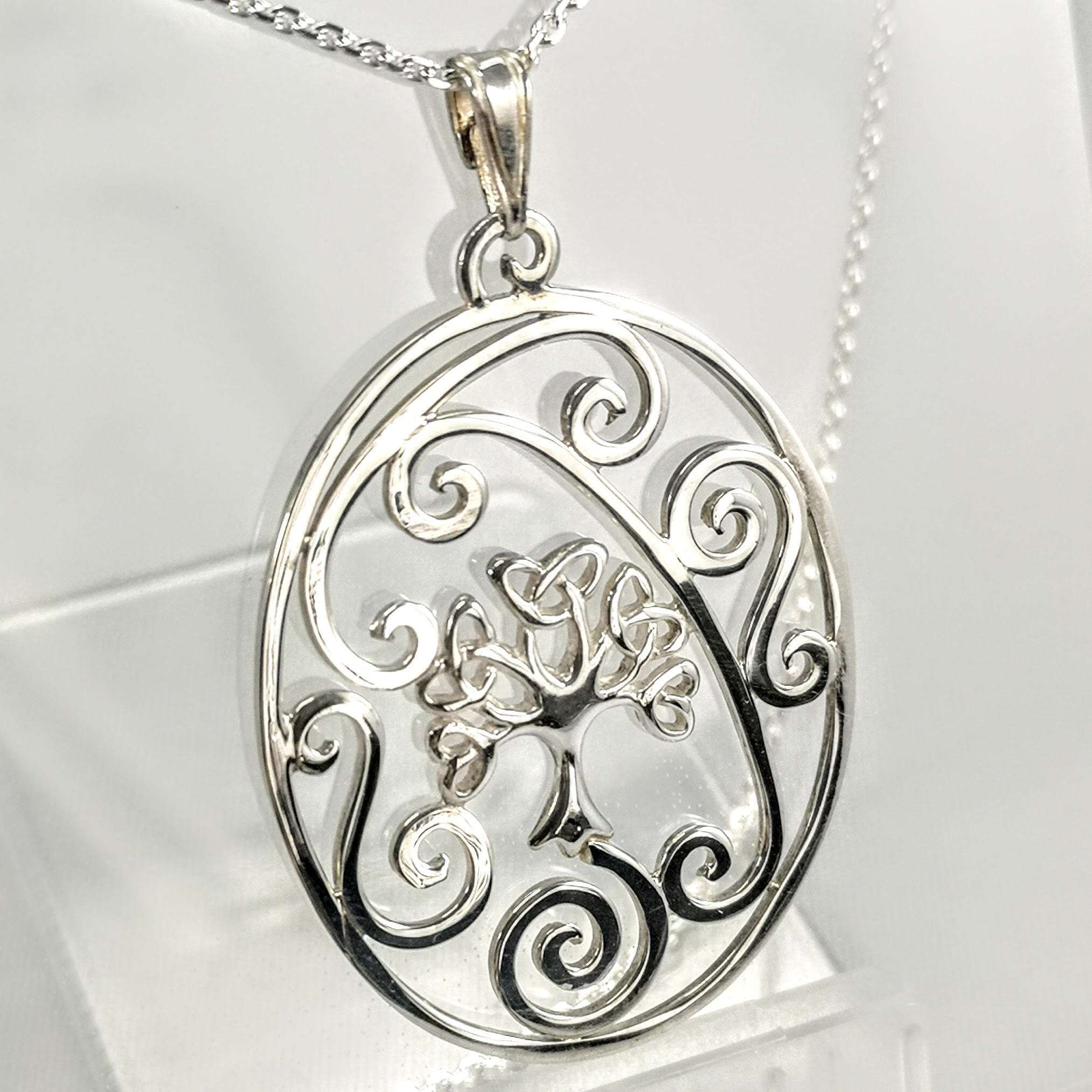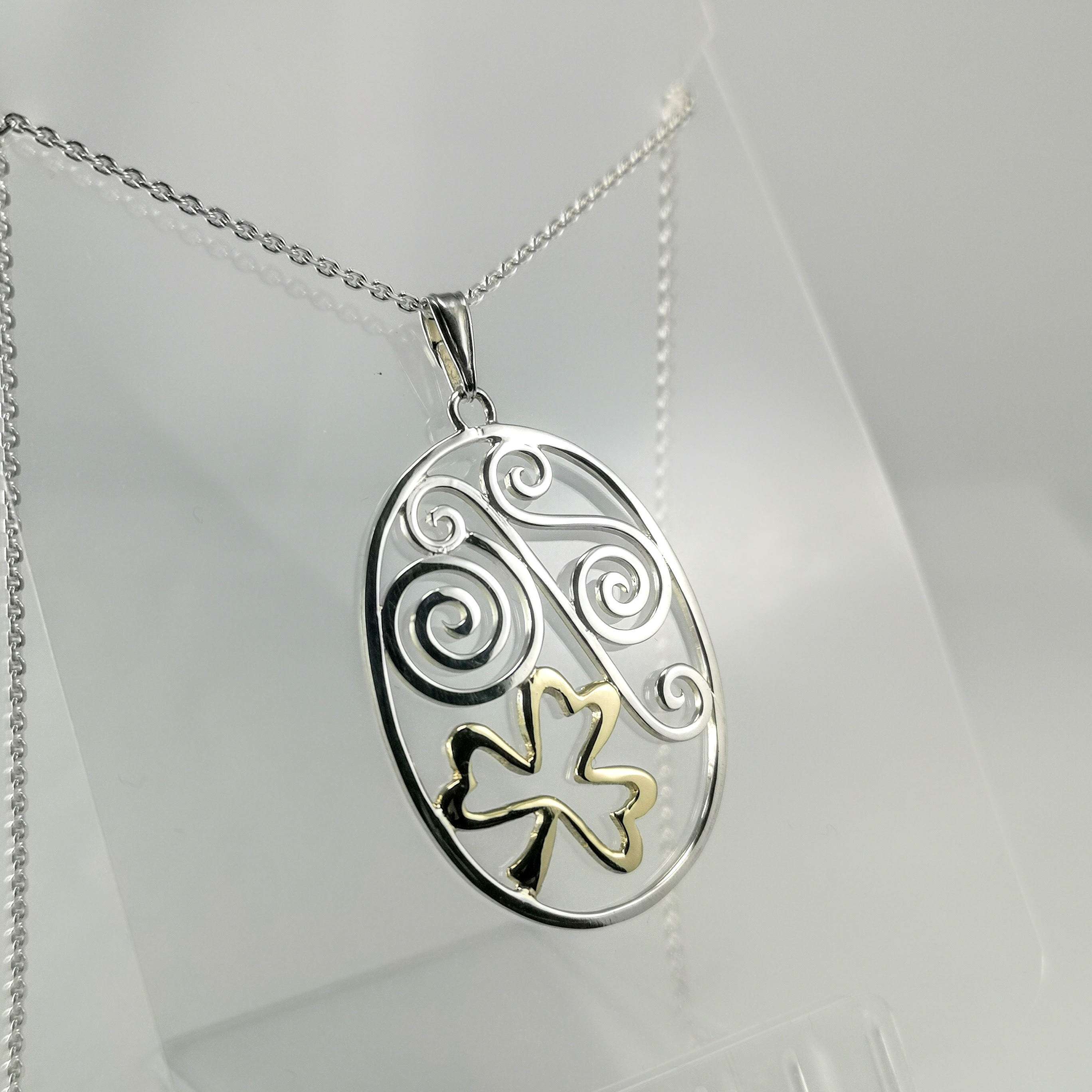Showing 1–16 of 29 results

Traditional Collection
Traditional In this collection, I have included my interpretations of Ireland’s most iconic symbols. Each one of these symbols have become so important in Ireland throughout the centuries. I have included my own versions of these very recognisable symbols accompanied by a brief description of their traditional meanings. The Triskele The triskele appears first on the entrance stone of the Newgrange passage grave in Ireland almost 5’000 years ago and has appeared throughout the Celtic world for centuries. Its triple spiral design symbolises the three phases of human existence. Our birth into this world, our life here on earth and our rebirth to eternal life. There is no mention of death as it was believed that death was just a transition from one world to the next. It is one of the most significant symbols in Celtic heritage and instantly associated with Ireland although it has appeared in the Uk and is very recognisable in Brittany, France where there is a strong Celtic influence. The Shamrock The three leafed shamrocks was used by Saint Patrick to demonstrate to the pagan population of Ireland the concept of the father, son and holy spirit, the Holy Trinity. It was a mystifying notion to the early Christians that three could exist as one. The shamrock with its three leaves emerging out of the one stem explained it perfectly and, over the centuries, came to epitomise Donegal, Ireland and the Irish. The Trinity Knot. As the concept of Christianity took hold in Ireland, symbols like the Trinity Knot emerged to depict the new ideas that Christianity brought with it. The trinity knot succeeded the shamrock as a more sophisticated representation of the holy Trinity with its three points emanating from the centre. This was combined with the idea of eternity as the knot has no beginning or end. This instantly identifiable simple Celtic knot has become synonymous with all things Irish. The Celtic Cross The term “the island of saints and scholars” is used to describe Ireland in the 6th, 7th and some of the 8th centuries. Peace, prosperity and a new religion spurred on a surge in creativity and treasures of every kind were being produced on this island. This abundance of treasure attracted the attention of the Viking invaders seeking riches and they began a ferocious assault on the peaceful monasteries and monks of Ireland. They attacked and they plundered and pillaged the monasteries, stealing their hoards of precious valuables. Eventually, in the latter half of the 8th century, monasteries began building round towers with rope ladders to protect themselves and their precious artworks from the marauding hordes. Also, the great artists and scholars of the time began to express themselves in a way that would be of no value to the intruders and couldn’t be carried off across the sea. They carved stone crosses, many telling biblical stories as they carved. They adorned the crosses with intricate weave patterns and christian imagery. The circular ring linking the limbs of the cross has a two fold meaning. It depicts the pagan sun aligning with the christian cross and it also represents the halo of our lord on the cross. We have a rich heritage of Celtic crosses all over the Island of Ireland and they are instantly associated with our country all over the world. The Tara Brooch This is one of the finest examples of ancient goldsmithing yet to be discovered on the island of Ireland. Many similar styled brooches have been found in hoards uncovered by archaeologists with simpler designs and less valuable metals but the Tara brooch is unsurpassed for its intricacy and beauty. This style of brooch was known as penannular brooches meaning that the pin was separate from the ring. The ring was placed on the fabric and the pin was placed through the fabric within the ring to make the fastening. These were worn by all the early cents and the more elaborate brooches displayed wealth and status within the community. The Saint Brigid's Cross. St.Brigid was born in the same era as St.Patrick and carried on his work spreading the new faith to remote settlements in the Irish countryside. She wove simple crosses from rushes so as the pagan Irish could have an image of the new faith in their dwelling houses and the tradition has survived ever since. On St.Brigid's feast day, new crosses are woven in households all over the country to be displayed until the following year. It is one of Ireland's most beloved customs. The crosses protect the home from hunger, fire, and evil and protect the traveller. They were a parting gift to a loved one emigrating and would have been part of the meagre belongings of all the Irish who have left our shores. The Harp The Brian Boru harp is the official emblem of the nation of Ireland. It is named after the great high king and warrior Brian Boru who defeated the Vikings at the battle of Clontarf and who is said to have been an accomplished harpist. It is the predominant instrument in the development of Irish music with the best composers using the harp as their instrument of choice. The harp adornes coinage, official documents, and has a very prominent place on the pint of Guinness. The Claddagh The claddagh ring was first created by a man named Richard Joyce in the small fishing village of claddagh, Co.Galway. The story goes that, on a long distant sea journey, he was captured and sold into slavery to a Morrocan goldsmith who taught him the art. After fourteen years, he was released and returned to his native home. He was reunited with his true love and presented her with a ring which symbolised his devotion to her. The heart represents love, the crown loyalty and the hands friendship depicting the three qualities of a true and lasting relationship.The point of the heart points to your own heart if you have found your true love and If it points away, your heart is free and waiting for your soul mate. Embark on a journey of enchantment with our Shamrock Jewellery—a captivating collection that gracefully weaves tradition and elegance. Each piece is a testament to Irish heritage, adorned with the iconic shamrock—a symbol of fortune and cultural resonance. Immerse yourself in the allure of our Traditional Irish Jewellery Ireland, where every creation narrates a tale of enduring beauty and craftsmanship. Meticulously designed, our Traditional Irish Jewellery embraces authenticity, echoing the rich cultural legacy of Ireland. Embrace the magic of Shamrock Jewellery, a harmonious blend of luck and tradition. Explore our curated collection, and experience the spellbinding beauty of Traditional Irish Jewellery—thoughtfully crafted to capture the essence of Ireland's vibrant cultural mosaic. Elevate your style with the unique charm of Shamrock Jewellery Ireland and Traditional Irish Jewellery Ireland—a distinctive fusion of cultural pride and exquisite artistry.
Traditional
Sterling silver claddagh and shamrock pendant
€55.00
Traditional
Sterling silver claddagh drop earrings
€45.00
€55.00
€49.00
€65.00
€75.00
Traditional
Sterling silver oxidised celtic cross pendant
€55.00
Traditional
Sterling silver shamrock pendant
€39.00
Traditional
Sterling silver small Celtic Cross pendant
€45.00
Traditional
Sterling silver St Bridgid’s cross pendant
€55.00
€75.00
€95.00
€49.00
Traditional
Traditional Claddagh Ring
€45.00
Traditional
